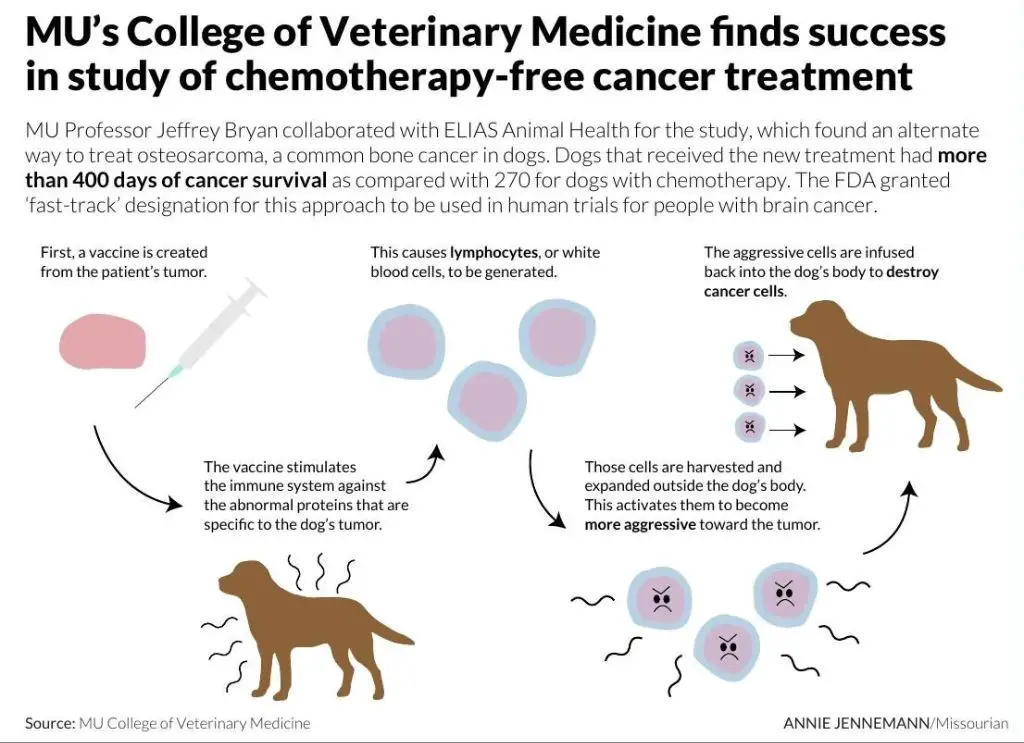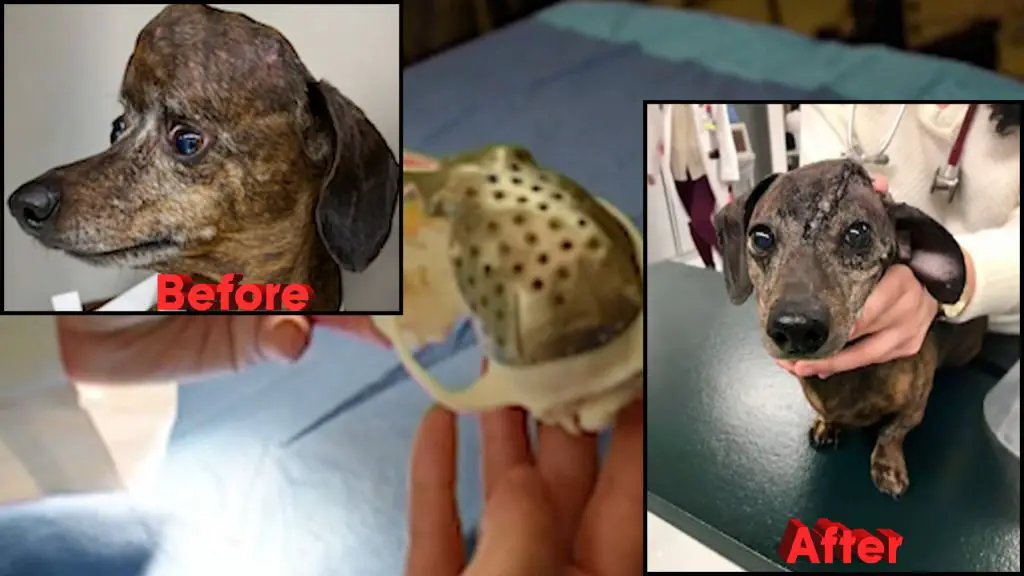Introduction
Radiation therapy is a treatment that uses high-energy radiation to kill cancer cells and shrink tumors in dogs. The radiation damages the DNA inside cancer cells, causing them to die. Healthy cells can also be affected, but they can repair themselves in a way that cancer cells cannot. The therapy is carefully planned to minimize side effects and damage to normal tissue. The goal of radiation therapy is to get rid of or control the cancer while preserving as much normal function as possible (source).
Types of Radiation Therapy
There are a few main types of radiation therapy used for dogs:
External beam radiation is the most common type of radiation therapy for dogs. It involves delivering radiation from a machine outside the body and aiming it at the tumor or area needing treatment. It allows high doses of radiation to be directed at the cancer while sparing healthy tissue around it.
Internal radiation, also called brachytherapy, involves implanting radioactive sources inside the body near the tumor to deliver targeted radiation over a period of time. This allows treatment to be concentrated within the tumor while exposing nearby healthy tissue to less radiation.
Stereotactic radiosurgery is an advanced form of highly-focused external beam radiation therapy. It uses imaging guidance to target radiation beams from many angles to deliver potent doses of radiation precisely to the tumor while protecting surrounding normal tissue.
Effectiveness of Radiation

Radiation therapy can be an effective treatment for certain types of canine cancers. According to one study published in the PubMed journal, radiation therapy for grade 2 mast cell tumors in dogs had a 1 year survival rate of 100% and a 2-5 year survival rate of 96% (https://pubmed.ncbi.nlm.nih.gov/8947870/).
Another source from PetMD states that on average, the overall response rate to palliative radiation therapy is around 75%. However, the response rate varies based on the type of tumor. Lymphoma, in particular, has been shown to have high response rates to radiation therapy (https://www.petmd.com/blogs/thedailyvet/dr-coates/2016/february/how-effective-radiation-therapy-dogs-33580).
So while radiation may not be equally effective against all cancers, for certain types like lymphoma and mast cell tumors, radiation therapy can lead to high survival rates and tumor response rates in dogs.
Side Effects
Radiation therapy can have several side effects in dogs, both in the short term during treatment and long term after treatment is complete. According to Veterinary Medical Centre[1], common acute side effects during radiation treatments include:
- Skin changes like redness, irritation, and hair loss in the treatment area
- Fatigue and decreased activity levels
- Decreased appetite
VCA Animal Hospitals notes that if the mouth or head is being treated, possible acute side effects are excessive drooling, bad breath, mouth sores, and secondary infections[2]. According to Vet Specialty, other organs like the lungs, colon, or bladder may also show side effects like coughing, diarrhea, or urinary issues if being treated directly[3].
Long term or late side effects, which can develop months or years later, include:
- Permanent hair loss and skin damage
- Scarring and tissue damage in the treated area
- Increased risk of secondary cancers

These potential side effects must be carefully weighed against the benefits when considering radiation therapy for a canine cancer patient.
Cost
Radiation therapy for dogs can be quite expensive. According to Cornell University, radiation therapy will range from approximately $2,500-$7,000 [1]. CBS News notes that radiation treatments for brain and nasal tumors run between $6,000 and $10,000 [2]. Wag Walking states that the price for radiotherapy typically ranges from $1,000 to several thousand dollars due to the complexity of the process and cost of equipment [3]. So while costs can vary, owners can expect to pay anywhere from $2,500 to $10,000 for a full course of radiation treatment for their dog.
Quality of Life
Radiation therapy can help extend and improve quality of life for dogs with cancer, though the benefits vary depending on the type and stage of cancer. According to one study, dog owners reported a median quality of life score of 9 out of 10 for their dogs undergoing radiation therapy for brain tumors. The treatments were well tolerated, allowing dogs to maintain daily activities. Though radiation may not cure cancer, it can shrink tumors and relieve symptoms, enabling dogs to live comfortably for months or even years longer.
However, radiation side effects like fatigue may temporarily disrupt normal routines. Dogs may need extra rest post-treatment. Close monitoring and medication can help manage side effects. While some dogs may experience reduced activity levels, most adapt well and continue enjoying life. The primary goal of radiation is extending high-quality life rather than achieving remission. With careful planning and support, radiation therapy can grant dogs precious additional time without drastically impacting daily living.
When Radiation is Recommended
Radiation therapy is often recommended when a dog has certain kinds of cancers or is at an advanced stage of the disease. Some cancers that commonly respond well to radiation include:
– Brain tumors [1]
– Nasal tumors

– Oral cancers like squamous cell carcinoma
– Thymomas
Radiation may also be recommended when the cancer has metastasized and spread to other areas of the body. It can help shrink tumors and slow the spread of cancer cells.
In terms of disease staging, radiation is often used for stages II-IV cancers that have grown larger or spread beyond the initial tumor site. It is less commonly used for early stage I cancers that are small and localized.
Radiation can be very helpful for providing palliative care in advanced stages of cancer, even if it can no longer cure the disease. It alleviates pain and symptoms to improve quality of life.
Alternatives to Radiation
There are several alternatives to radiation therapy that may be effective for treating cancer in dogs. Some of the most common options include:
Surgery – If the cancer is localized and has not metastasized, surgically removing the tumor may offer a cure. Surgery allows complete removal of the cancerous tissue and provides tissue samples to determine the stage and grade of the cancer. However, surgery may not be possible if the tumor is in a hard-to-reach location or has spread (Source).
Chemotherapy – Chemotherapy uses anti-cancer drugs to kill cancer cells and shrink tumors. It may be used before surgery to shrink large tumors or after surgery to kill any remaining cancer cells. Chemotherapy can have significant side effects but is less invasive than radiation. It may help extend survival or provide palliative care (Source).
Palliative care – If the cancer is advanced, palliative care focuses on managing pain and symptoms to improve quality of life without attempting to cure the disease. Palliative care may involve pain medications, dietary changes, or other supportive care (Source).
Making a Decision
When deciding whether radiation therapy is right for your dog, there are several important factors to consider and questions to ask your veterinarian:
What is the goal of treatment – cure, long-term control, or palliation? Understanding the likelihood of achieving the goal can help determine if radiation is warranted (https://bluepearlvet.com/radiation-oncology/).
What are the potential side effects and will they impact quality of life? Radiation can cause fatigue, skin irritation, nausea, and other side effects (https://petcureoncology.com/radiation-therapy-in-pets/).

What is the total cost of treatment, including follow-up care? Radiation is expensive, often $5,000-$8,000, so financial considerations are important (https://vcahospitals.com/know-your-pet/radiation-therapy).
What are the alternatives to radiation? In some cases, surgery, chemotherapy, or palliative care may be reasonable options.
Asking your veterinarian these questions can help determine if radiation therapy is the right choice for your dog and your family.
Conclusion
In summary, radiation therapy can be an effective cancer treatment for dogs when recommended by a veterinary oncologist. The potential benefits and risks should be carefully weighed against alternatives like surgery, chemotherapy, and palliative care. Key factors to consider are the type and location of the cancer, the dog’s age and health status, treatment goals, and possible side effects. Radiation requires anesthesia and frequent visits which impact quality of life. Costs can also be prohibitive. Ultimately the decision depends on each dog’s unique circumstances. If radiation is pursued, work closely with your vet to provide supportive care and minimize side effects. While challenging, radiation can extend survival times and provide cancer control when used appropriately.